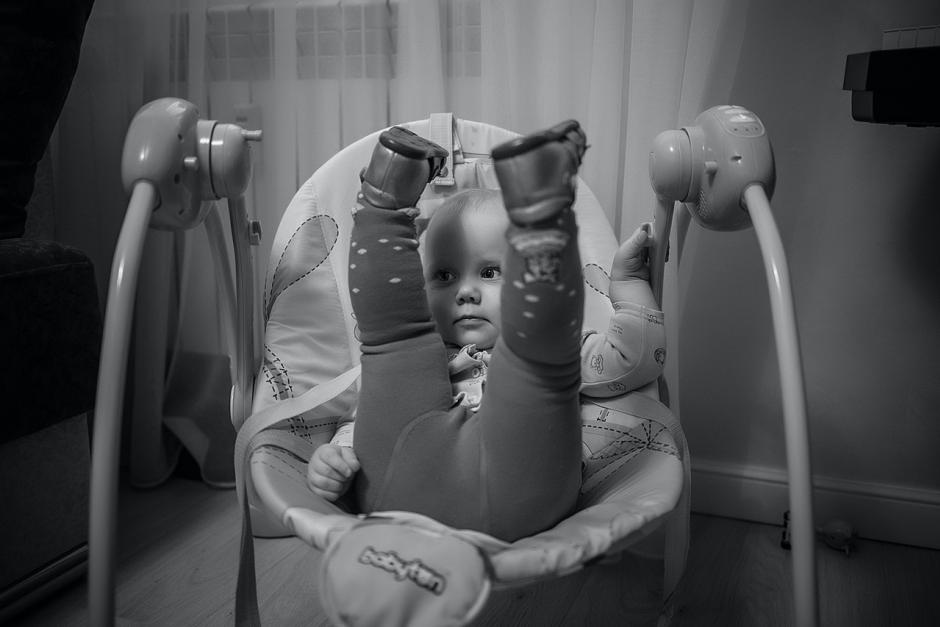Baby bouncers are often enthusiastically recommended to new parents to be. They can be an entertaining experience for your little one and can give you much needed moments where your hands are free. But are they safe? And should you buy one? Let’s take a look.
What is a baby bouncer?
Baby bouncers look like small reclining fabric seats that stand on a frame on the ground. Your baby sits in the seat and is held securely by padding and straps. The seat can be bounced or rocked, either by the baby or by your hand (or foot). Some baby bouncers even have motors to bounce and/or vibrate them.
Why do babies love baby bouncers?
Baby bouncers tend to sit at a reclined angle, part-way between lying and sitting up. For babies that can’t yet sit upright, they can now experience independent sitting for the first time. Most babies adore watching the world around them too. A baby bouncer can give them an excellent opportunity to sit in a room and survey their domain. And usually watch you tidy up, load the dishwasher or cook a meal.
The rocking motion can be soothing as well. Some chairs also vibrate which can be relaxing and can help your baby burp by dislodging bubbles of gas in their digestive tract.
Why do parents love baby bouncers?
Many parents love baby bouncers because they offer valuable moments of freedom. Looking after your baby is rewarding, but it can be demanding too. With changing nappies, feeding, tummy time, playtime and carrying in your arms time, it can be hard to find the time to do the other daily activities you need to do. Sitting your little one down in a baby bouncer in the same room as you can give you a chance to get on with household tasks, or just let you have a break to sit down with a cup of coffee.
Are baby bouncers safe?
So, are they safe for babies? The good news is, yes baby bouncers are safe. They’re designed to seat a baby in an ergonomic position that safely supports their back, neck and head. But, like any piece of baby equipment, baby bouncers are only safe if you use them properly. Make sure you:
- Place your baby properly in the bouncer, ensuring their back and neck are supported and that they’re held securely by the pads and straps
- Ensure their head can’t slump forwards and block their airway
- Don’t leave them unsupervised in the bouncer. Always keep them in the same room and in sight of you
- Don’t let them sleep in a baby bouncer, as this can increase the risk of sudden infant death syndrome (SIDS)
- Don’t leave them in a bouncer for long periods (over one hour). Shorter and frequent bouncer time is better than fewer and lengthier sits
You should also make sure your baby hasn’t outgrown their bouncer – their head and neck should be supported and shouldn’t extend over the top of the bouncer.
At what age can a baby use a baby bouncer?
As long as the baby bouncer supports your baby’s neck and head, newborn babies can be placed in them. Just make sure there’s no risk of your baby falling out or their head tipping forwards and blocking their airway. For young babies, keep baby bouncer time short at first – just a handful of minutes.
At what age should a baby stop using a bouncer?
Your baby should stop using a baby bouncer when they can sit up on their own. As at this age, they’re at risk of falling or rolling out of the bouncer. Most baby bouncers also come with a recommended weight range that shouldn’t be exceeded. If your baby becomes heavier than the upper age, they shouldn’t use the baby bouncer anymore.
How long can my baby sit in a baby bouncer?
The World Health Organisation (WHO) recommends that children under five shouldn’t sit in the same position for more than one hour. This doesn’t mean your baby can’t sit in a baby bouncer multiple times a day, just not for more than an hour at a time. You can make plenty of jaunts in the baby bouncer part of your baby’s daily routine, in between naps, feeds, changes and trips outdoors.
Can my baby sleep in a baby bouncer?
A gently rocking or vibrating baby bouncer can put a tired baby to sleep faster than anything. And whilst it can be tempting to leave your little one to nap in their bouncer, the experts recommend you don’t. Your baby should sleep on their back in a Moses basket or cot. Sleeping in other furniture – including baby bouncers – can increase the risk of SIDS.
Which baby bouncer is the best?
No one baby bouncer is best. But if you want to find the best baby bouncer for you and your baby, you should make sure:
- The baby bouncer you buy has a safety standard sticker or label, such as a CE Standard label
- You’re comfortable with and understand how to set up and operate the baby bouncer properly, including how to sit your baby safely in the bouncer
- You don’t buy a second-hand baby bouncer or accept a used one from friends or family. It may look fine, but it could be damaged or unsafe
- The baby bouncer you buy has the features you’re looking for
Baby bouncers can be a fun experience for both of you, just as long as they’re safe and properly used.
Sources:
https://www.babybjorn.eu/baby-bouncers-faq/
https://www.healthline.com/health/baby/baby-jumper-age
https://www.babylist.com/hello-baby/best-bouncers-and-swings
https://apps.who.int/iris/bitstream/handle/10665/325147/WHO-NMH-PND-2019.4-eng.pdf
https://www.nhs.uk/conditions/sudden-infant-death-syndrome-sids/



Leave a Comment: